 by our College Data Analytics Team
by our College Data Analytics TeamSAE Expression College total enrollment is approximately 182 students.
Male/Female Breakdown of Undergraduates
The full-time SAE Expression College undergraduate population is made up of 15% women, and 85% men.
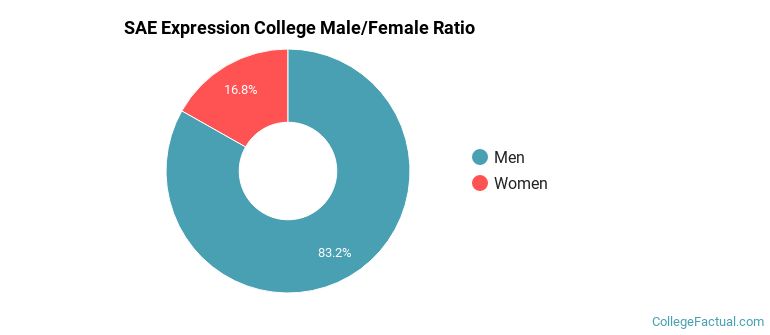
For the gender breakdown for all students, go here.
SAE Expression College Racial/Ethnic Breakdown of Undergraduates

| Race/Ethnicity | Number |
|---|---|
| Black or African American | 72 |
| Hispanic | 39 |
| White | 30 |
| Multi-Ethnic | 24 |
| Asian | 6 |
| Unknown | 6 |
| Native Hawaiian or Pacific Islander | 2 |
| International | 2 |
See racial/ethnic breakdown for all students.
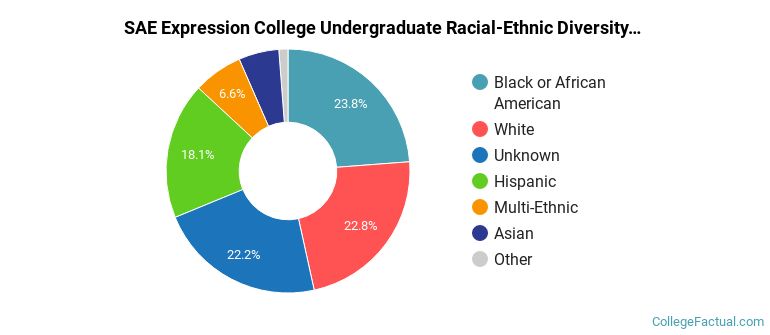
| Race/Ethnicity | Number |
|---|---|
| Black or African American | 72 |
| Hispanic | 39 |
| White | 30 |
| Multi-Ethnic | 24 |
| Asian | 6 |
| Unknown | 6 |
| Native Hawaiian or Pacific Islander | 2 |
| International | 2 |
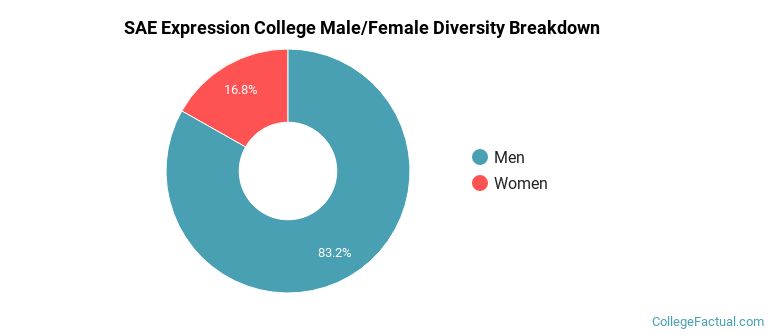
There are approximately 27 female students and 155 male students at SAE Expression College.
SAE Expression College ranks 1,509 out of 2,183 when it comes to geographic diversity.
7.14% of SAE Expression College students come from out of state, and 0% come from out of the country.
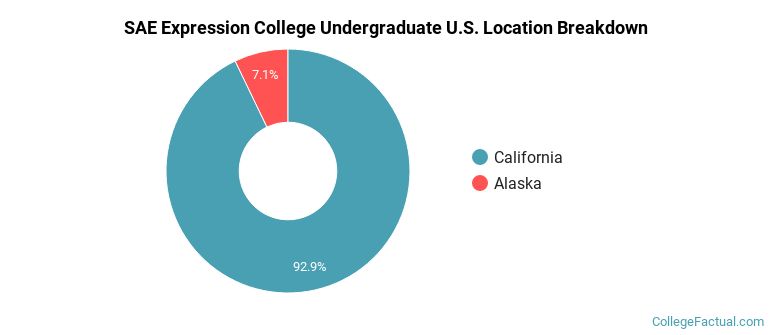
The undergraduate student body is split among 2 states (may include Washington D.C.). Click on the map for more detail.
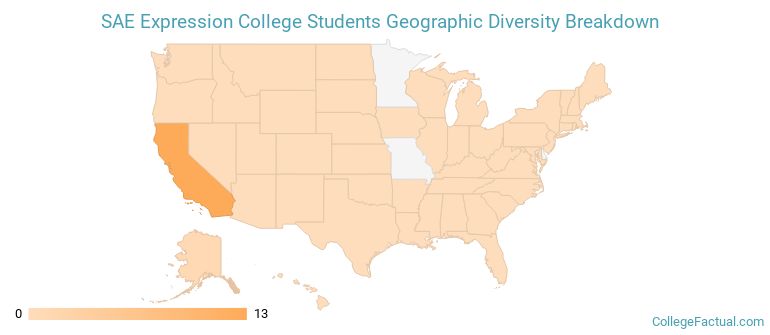
| State | Amount |
|---|---|
| California | 13 |
| Alaska | 1 |
| Alabama | 0 |
| Arkansas | 0 |
| Arizona | 0 |
Students from 8 countries are represented at this school, with the majority of the international students coming from South Korea, Vietnam, and Malaysia.
Learn more about international students at SAE Expression College.
A traditional college student is defined as being between the ages of 18-21. At SAE Expression College, 31.30% of students fall into that category, compared to the national average of 60%.

| Student Age Group | Amount |
|---|---|
| 22-24 | 93 |
| 25-29 | 83 |
| 20-21 | 76 |
| 30-34 | 33 |
| 18-19 | 32 |
| 35 and over | 27 |
| Under 18 | 0 |
Footnotes
*The racial-ethnic minorities count is calculated by taking the total number of students and subtracting white students, international students, and students whose race/ethnicity was unknown. This number is then divided by the total number of students at the school to obtain the racial-ethnic minorities percentage.
References
Department of Homeland Security Citizenship and Immigration Services
Learn more about how College Factual creates their Diversity Rankings.